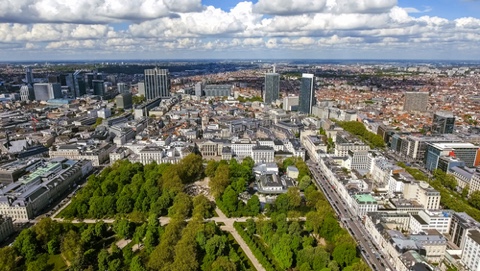
“How can we create more inclusive cities?” This is a key question dominating the dialogue on smart cities, responding to the rally cry to move beyond “tech for tech’s sake” and instead focus on human-centered applications. Encouraging entrepreneurship amongst minority stakeholder groups may be a step in the right direction.
On October 9, at the Regions & Cities Conference in Brussels, Belgium, the European Union (EU) and the Organization for Economic Co-operation and Development (OECD) launched The Better Entrepreneurship Policy Tool aimed at inclusive social policy. This online tool is designed to “help you explore how public policies at national, regional and local levels can support youth, women, the unemployed, and migrants in business creation and support the development of social enterprises.”
Available online are resources as well as assessments to evaluate how a city, region or country is meeting the needs of various stakeholders relative to entrepreneurship and more specifically, social entrepreneurship. It goes further to segment by audience (women, youth, migrants, unemployed) as a way to support them in their entrepreneurial endeavors.
For each target group, there are four versions of the self-assessment tool organized in six modules. Each takes about ten minutes — or an hour for the entire assessment. Instead of questions, there are “good practice statements” that can be evaluated according to the perception of how the community performs. Answers are scored on a scale of zero to ten.
An example relevant to women’s entrepreneurship: “there is an action plan to mobilize public sector actors and other relevant stakeholders to achieve youth entrepreneurship policy objectives.” To what extent this is true in your context?”
So first the buzz kill: The Better Entrepreneurship Policy Tool is not a magic wand that will solve the challenges of inequity have plagued our communities consistently for decades. Also it is created from a European perspective, voice and set of assumptions. Obviously things are quite different in the U.S. on everything from history to approaches to funding mechanisms.
So how might American communities use and benefit from what our neighbors across the pond have created?
- The Tool can serve to organize communities around the importance of mobilizing support for social/entrepreneurship as a means of upward mobility for under-represented and disadvantaged groups that often have lower levels of human and social capital.
- The Tool can provide a framework to assess how a community is or is not meeting the needs of a specific stakeholder groups. Since the answers are subjective, it could be a useful exercise to examine and evaluate the differences in perception about how the community is addressing these needs.
- Final results can be used to create strategies and action plans to address the unmet needs of the population.
- The Assessment outcomes (results, strategies, action plans) can then be shared with stakeholder groups as a means of creating or improving connection points and fostering a new levels of dialogue. Often the perception of how needs are being met is different depending on whether you are a provider or a recipient. This process may reveal, and perhaps even heal, some invisible fissures.
- The Tool’s design and structure can be expanded and applied to other subjects relevant to smart city applications.
In the U.S., we have historically designed our cities, our policies and even our political mechanisms to maintain the status quo, often at the expense of minority populations. Assigning government resources at increasing amounts is one approach but is fraught with political controversy and difficulty in terms of application, scale, and sustainability. Leaving it to the private sector to “work it out” places too much burden on actors that don’t have a vested interest in the outcome. It is not the job of business to fix the job of flawed policy.
However, The Better Entrepreneurship Tool at least provides a pathway forward to unite the public and private sector in news ways that allow them to express their views and share their perspective. It could (with a little work) ultimately inspire a willingness to collaborate, empathize, and even create a shared solution that benefits all and increases prosperity for both individual entrepreneurs and the region.
The challenges we face are massive and no one sector can “fix it.” We are wise to learn from others, such as the EU and the OECD, who are framing these tools for a positive economic output.


